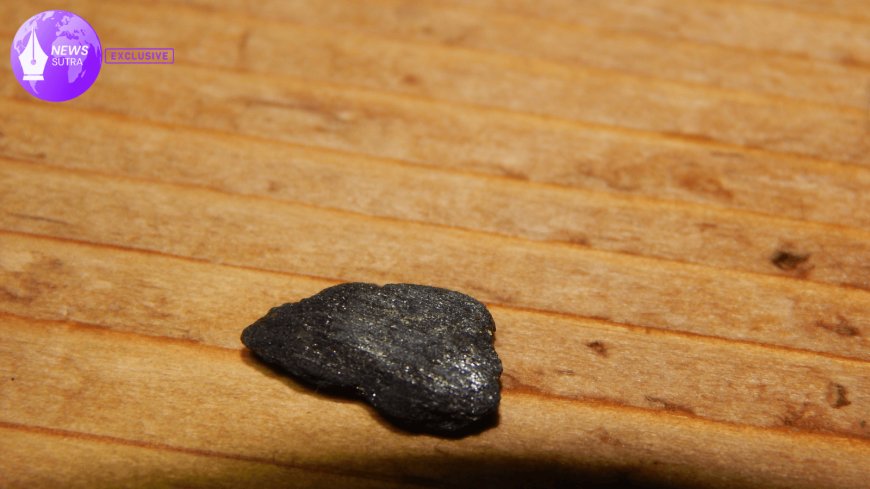Biochar Boom: How U.S. Farmers Are Using Ancient Soil Solutions to Fight Fertilizer Shortages
U.S. farmers turn to biochar to combat fertilizer shortages caused by tariffs, with field studies showing improved soil health and crop yields.

Across the heartland of the United States, farmers are quietly embracing an ancient agricultural practice with a modern twist: biochar. Amid ongoing trade tensions and tariff wars that have disrupted fertilizer imports, American growers are turning to this charcoal-based soil amendment to boost crop yields, improve soil health, and reduce dependency on expensive synthetic fertilizers.
Fertilizer Shortages Hit U.S. Agriculture
The U.S. Department of Agriculture (USDA) recently reported that fertilizer prices have risen by nearly 20% year-over-year, largely due to tariffs on imported potash and phosphate. Corn, soybean, and wheat farmers in the Midwest have felt the pinch acutely, with some forced to ration applications or delay planting schedules.
John Ellis, a third-generation Iowa corn farmer, described the challenge:
"We’ve always relied on conventional fertilizers. With prices skyrocketing and shipments delayed, we had to find something sustainable that actually works. That’s how we came to biochar."
Biochar is created by heating organic material—such as crop residues or wood chips—at high temperatures in a low-oxygen environment. The result is a stable form of carbon that can improve soil fertility, increase water retention, and enhance microbial activity.
Field Insights: Biochar in Action
A recent field study conducted across five farms in Illinois, Iowa, and Nebraska examined soil samples before and after biochar application. The results were striking:
-
Soil moisture retention improved by 18–22%, helping crops survive dry spells.
-
Nitrogen efficiency increased, reducing the need for additional fertilizer inputs.
-
Soil microbial diversity expanded, creating healthier conditions for long-term crop production.
Dr. Hannah Mitchell, an agronomist who led the study, emphasized the importance of these findings:
"Biochar is not a magic bullet, but in the context of current trade and supply issues, it provides a practical, data-backed solution for farmers struggling to maintain yields."
These on-the-ground insights are backed by research from the U.S. Department of Energy and the National Sustainable Agriculture Coalition, which highlight biochar’s ability to sequester carbon while simultaneously enhancing soil productivity.
Trade Tensions and the Fertilizer Crisis
The U.S. fertilizer market has long been intertwined with global trade. Tariffs imposed on imports from Canada, Russia, and Morocco have created a ripple effect that affects farmers from Minnesota to Mississippi.
Analysts say biochar adoption is a strategic response, reducing reliance on imported nutrients and insulating farms from volatile markets. Michael Harper, an agricultural economist at the University of Nebraska, commented:
"We are seeing an interesting convergence: environmental benefits, economic relief, and increased farm resilience all rolled into one. Biochar provides a buffer against international market fluctuations."
Environmental and Long-Term Benefits
Beyond addressing immediate shortages, biochar offers a suite of environmental benefits:
-
Carbon Sequestration: Biochar locks carbon in the soil for decades, helping mitigate climate change.
-
Reduced Runoff: By improving soil structure, biochar reduces nutrient leaching into waterways, benefiting local ecosystems.
-
Enhanced Soil Health: Microbial diversity in biochar-amended soils promotes long-term fertility and resilience.
These benefits make biochar an appealing choice not only for crisis mitigation but for sustainable farming practices, which increasingly influence federal and state policy.
Farmers’ Experiences: Stories from the Midwest
Farmers report that while biochar requires initial investment and careful soil integration, the payoff can be substantial.
-
Mary Thompson, a soybean farmer in Nebraska, applied biochar last year and noted a 10% increase in yield despite a late-season drought.
-
In Illinois, Ellis’s cornfields now show healthier root systems and reduced fertilizer dependency, even during record-hot summers.
The anecdotal evidence is now being reinforced by university studies and USDA pilot programs.
The Future of Biochar in U.S. Agriculture
While biochar will not replace conventional fertilizers entirely, experts predict its use will expand as farmers look for resilient, cost-effective solutions to volatile markets. Government incentives, research grants, and cooperative extension programs are expected to further accelerate adoption.
The National Sustainable Agriculture Coalition recommends integrating biochar with cover cropping, crop rotation, and precision agriculture techniques to maximize long-term soil productivity.
For detailed guidelines on biochar application and soil integration, see the USDA Agricultural Research Service.
Conclusion
Biochar represents a practical, scientifically backed response to modern challenges in U.S. agriculture. By improving soil fertility, retaining moisture, and boosting microbial activity, it provides farmers a tool to navigate fertilizer shortages caused by trade wars. More importantly, its environmental benefits make it a key component of sustainable, resilient farming practices for the future.
As Ellis notes, “It’s an old idea finding new life. And in a world of uncertainty, that can make all the difference.”










